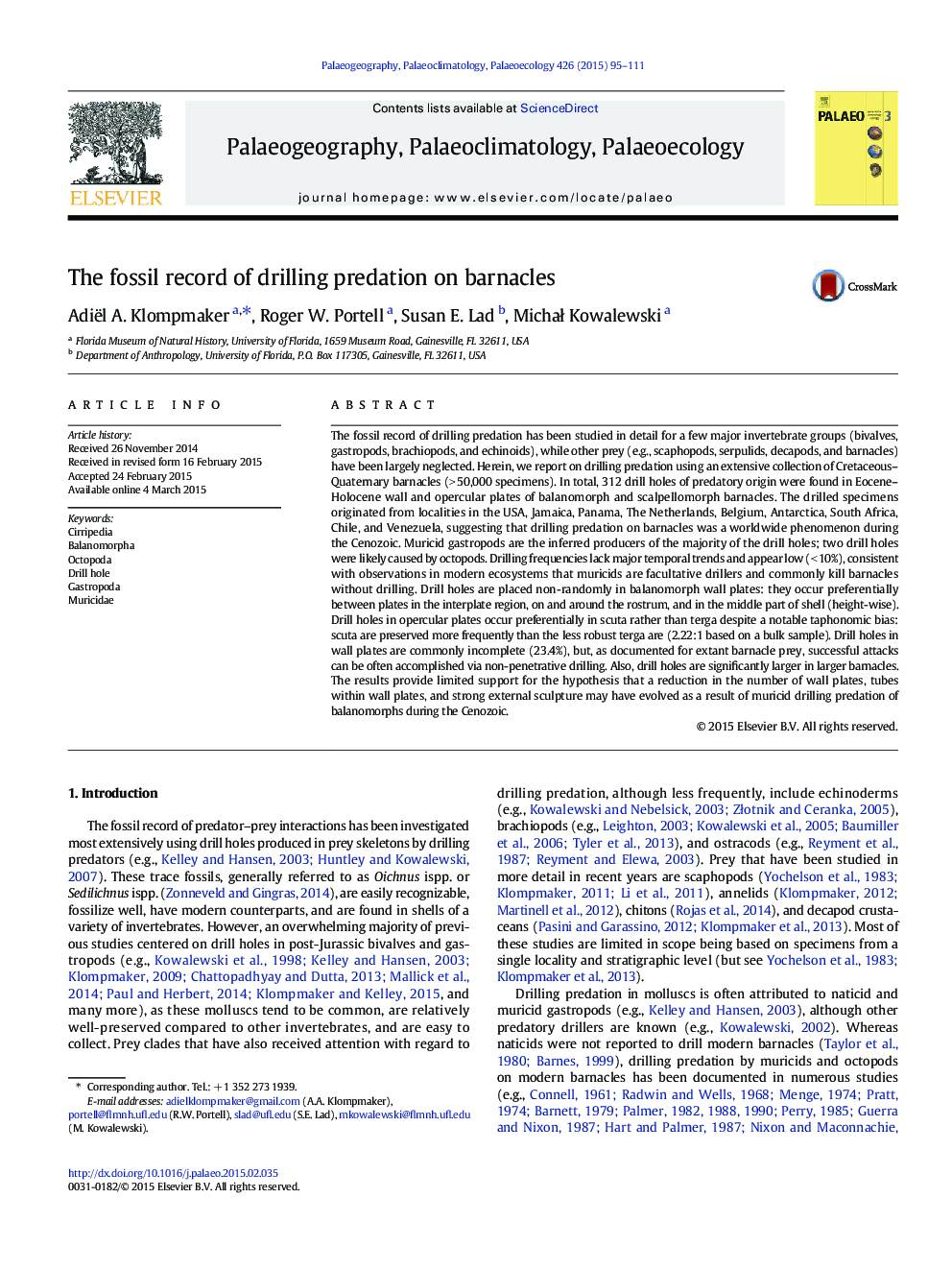| کد مقاله | کد نشریه | سال انتشار | مقاله انگلیسی | نسخه تمام متن |
|---|---|---|---|---|
| 4465985 | 1622164 | 2015 | 17 صفحه PDF | دانلود رایگان |
• Only a few, local studies on drilling predation in fossil barnacles are known.
• Here, over 300 drill holes are reported in Eocene–Holo-Pleistocene barnacles.
• Drilling of barnacles appears to be a global phenomenon since at least the Neogene.
• Most drill holes are attributed to muricid gastropods, some to octopods.
• Limited support is found for morphological evolution of barnacles due to drilling.
The fossil record of drilling predation has been studied in detail for a few major invertebrate groups (bivalves, gastropods, brachiopods, and echinoids), while other prey (e.g., scaphopods, serpulids, decapods, and barnacles) have been largely neglected. Herein, we report on drilling predation using an extensive collection of Cretaceous–Quaternary barnacles (> 50,000 specimens). In total, 312 drill holes of predatory origin were found in Eocene–Holocene wall and opercular plates of balanomorph and scalpellomorph barnacles. The drilled specimens originated from localities in the USA, Jamaica, Panama, The Netherlands, Belgium, Antarctica, South Africa, Chile, and Venezuela, suggesting that drilling predation on barnacles was a worldwide phenomenon during the Cenozoic. Muricid gastropods are the inferred producers of the majority of the drill holes; two drill holes were likely caused by octopods. Drilling frequencies lack major temporal trends and appear low (< 10%), consistent with observations in modern ecosystems that muricids are facultative drillers and commonly kill barnacles without drilling. Drill holes are placed non-randomly in balanomorph wall plates: they occur preferentially between plates in the interplate region, on and around the rostrum, and in the middle part of shell (height-wise). Drill holes in opercular plates occur preferentially in scuta rather than terga despite a notable taphonomic bias: scuta are preserved more frequently than the less robust terga are (2.22:1 based on a bulk sample). Drill holes in wall plates are commonly incomplete (23.4%), but, as documented for extant barnacle prey, successful attacks can be often accomplished via non-penetrative drilling. Also, drill holes are significantly larger in larger barnacles. The results provide limited support for the hypothesis that a reduction in the number of wall plates, tubes within wall plates, and strong external sculpture may have evolved as a result of muricid drilling predation of balanomorphs during the Cenozoic.
Figure optionsDownload high-quality image (137 K)Download as PowerPoint slide
Journal: Palaeogeography, Palaeoclimatology, Palaeoecology - Volume 426, 15 May 2015, Pages 95–111
